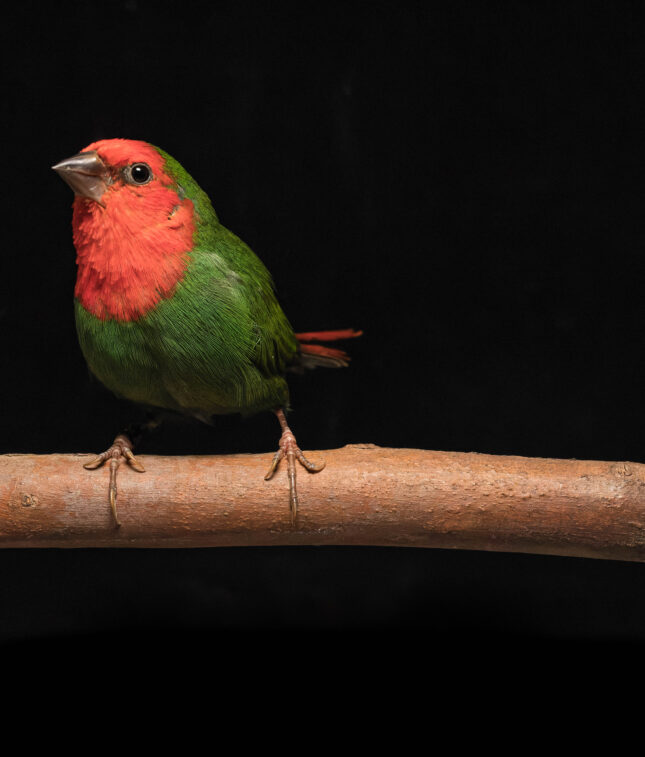The Corbo Lab recently had a paper published in Current Biology, “A mechanism for red coloration in vertebrates.” In the paper, researchers define the enzymatic mechanism through which vertebrates make red color by studying the photoreceptors of chickens. This mechanism plays a fundamental role in animal coloration and color vision, said Joe Corbo, MD, PhD, Professor of Pathology & Immunology at Washington University School of Medicine.
“This may seem like an esoteric discovery of an enzymatic mechanism that only occurs in a single cell type in the eye of a bird. However, we also showed that this mechanism is used by birds to make red pigments in their feathers, and fish to pigment their skin. Thus, our studies of an obscure cell type in the eye of the chicken have revealed one of the main mechanisms whereby animals make red color,” Dr. Corbo said.
Additionally, the Corbo Lab discovered that a third protein, TTC39B, enhances the production of red coloring in birds. TTC39B also regulates HDL, or “good cholesterol,” in the human bloodstream. Thus, the lab’s finding regarding TTC39B demonstrates a “fascinating connection between human serum lipoproteins and this seemingly obscure organelle in the cone receptors of birds,” one that could have implications in human biology and disease, Dr. Corbo said.
